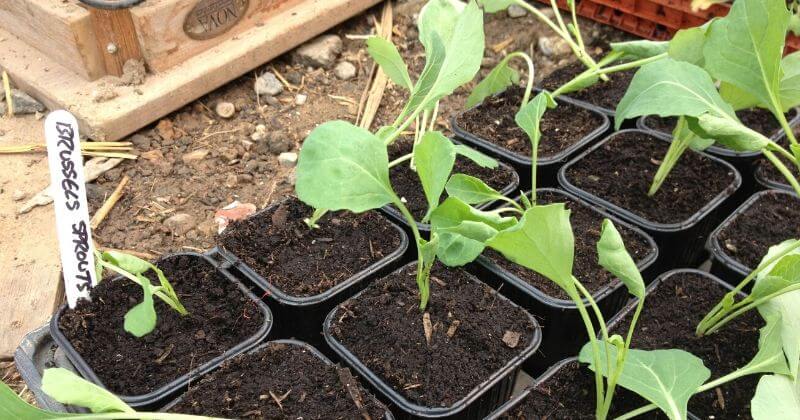
Fresh brussel sprouts are delicious, but you don’t need to have a large garden to grow brussel sprouts! Those with a lack of garden space can still harvest fresh sprouts by growing brussel sprouts in containers.
Seriously! All you need is a sunny spot and the right-sized container for growing. They’re incredible plants, especially if you’ve never seen one before.
Brussel sprouts grow, unlike any other plant, growing on tall plants with incredibly massive stalks. The sprouts look like tiny cabbages growing up and down the stems.
Brussel sprouts are a cool-season crop that needs to be planted in either the spring or fall, depending on the climate of where you live.
They have an extended maturity date, typically 90-100 days after transplanting the seedlings into the ground.
They’re worth the wait!
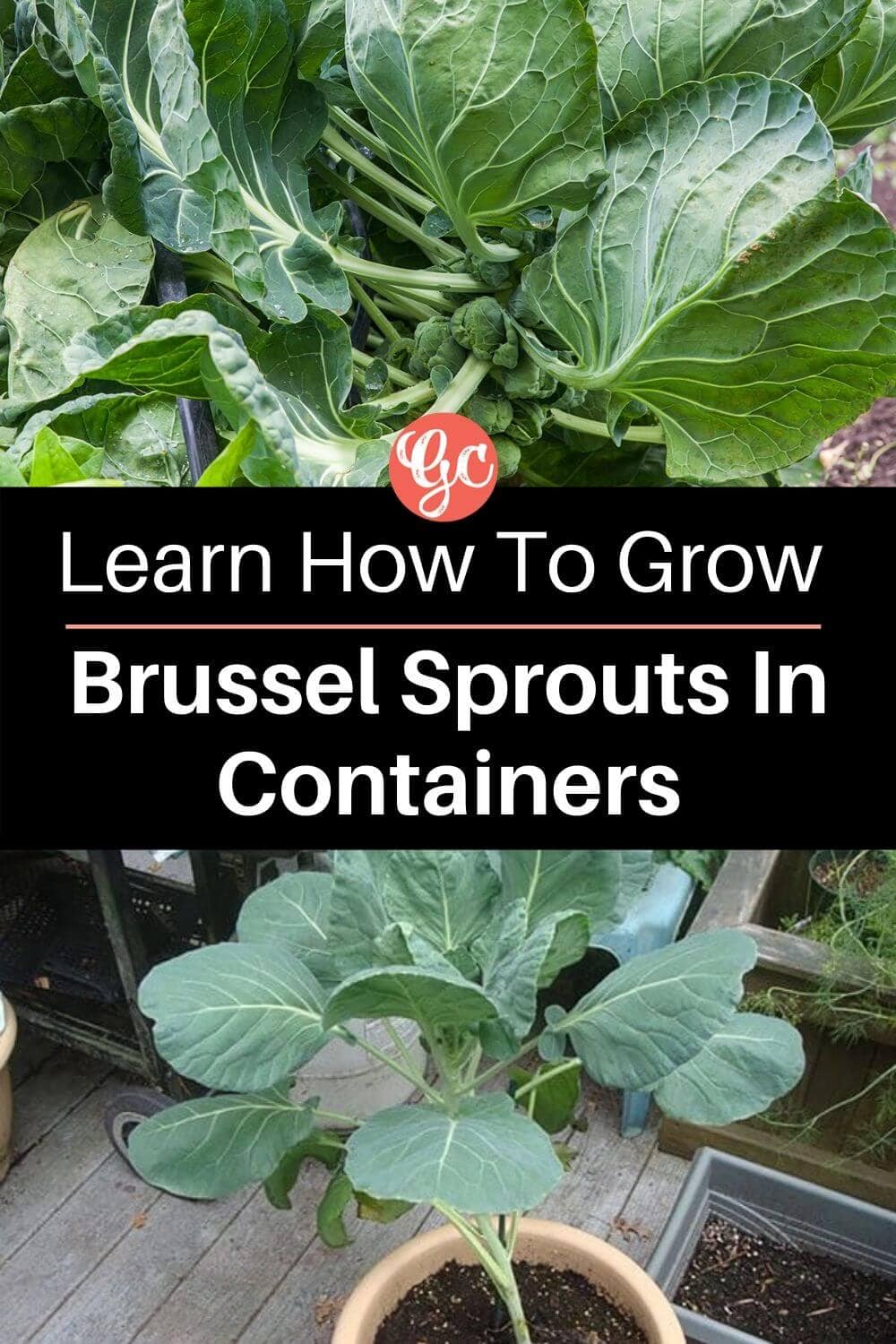
To grow brussel sprouts in containers, follow these steps:
Do you want to grow brussel sprouts in containers? In this article, we cover everything that you need to know about growing brussel sprouts in pots.
From when and how the seedlings to how to prune the plants to encourage a more abundant harvest, this guide will make it easier for you to grow homegrown brussel sprouts wherever you live.
How To Grow Brussel Sprouts In Containers
Brussel sprouts grow well in containers, but you need to take the right steps to produce them.
That means you need to know the right location for your containers when to start the seeds and the right soil for your plants.
1: Select The Right Spot
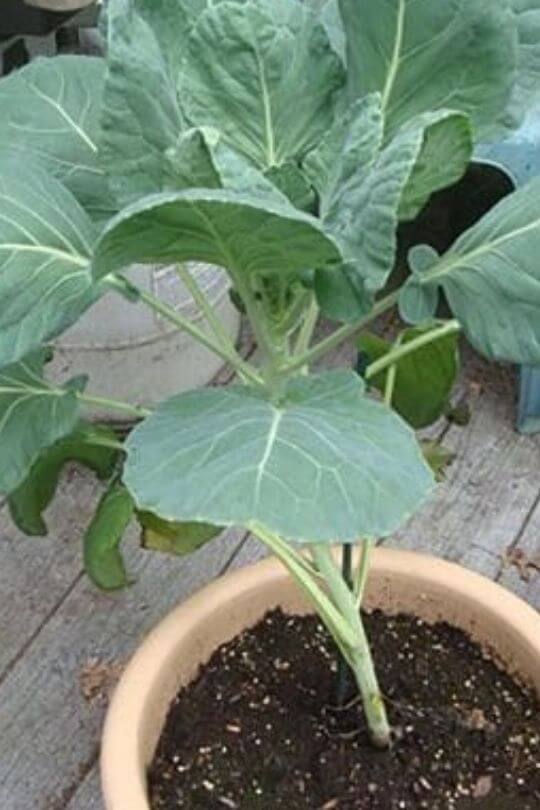
Take a look around your property and find a place that has plenty of sunlight as well as good air circulation. That’s a requirement for productive plants.
At the same time, there should be some protection against excessive wind. Due to their nature, brussel sprouts are unstable because of their thinner bases.
If you live in a warmer region, you’ll want to provide a partially shaded spot. Too much heat will damage or stunt their growth.
2: Pick The Right Pot For Brussel Sprouts
Anytime you grow a vegetable in a container, you have to make sure that you purchase the right sized pot.
For brussel sprouts, look for a standard-sized pot that is 5-7 gallons. It needs to be 12 inches deep and 12-14 inches in diameter.
If you have a 5-7 gallon container, you can grow one plant. If you want to grow more than one together, pick a container that is, at least, 15-gallons with an 18-inch diameter. In one square foot, you can grow two plants.
As for the material of the container, clay pots work well for brussel sprouts because they remain cool, drain well, and have decent air circulation.
You’ll want to make sure the pot has plenty of drainage holes. While brussel sprouts do love moist soil, they don’t enjoy standing water.
So, avoid getting containers without plenty of holes that allow the water to run out.
3: Use The Proper Soil
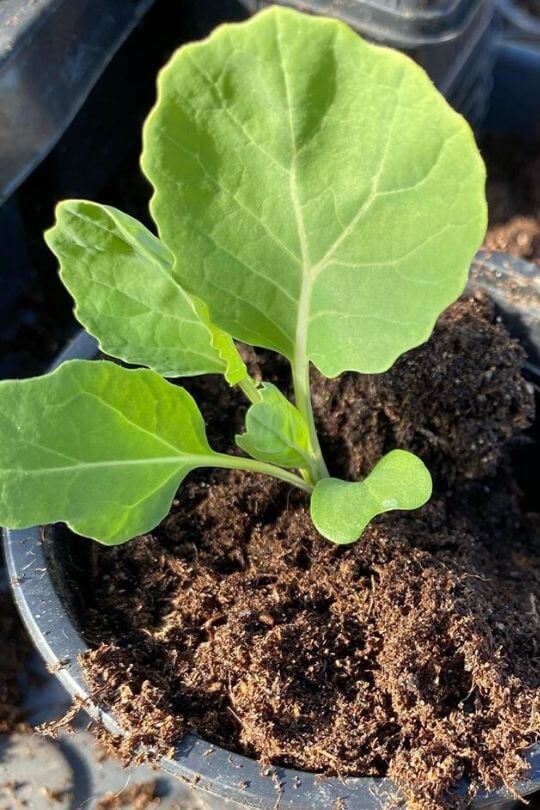
Like many cool-season crops, brussel sprouts do well in moist soils, so you want to make sure the soil holds as much moisture as possible without being soggy.
Clay-like dirt doesn’t bother them, but that can be hard to replicate in containers.
Use an organic, good quality potting mix that is light and well-draining, and consider adding more compost to increase the fertility and humus.
Brussel sprouts prefer a neutral soil pH level. If your soil is too acidic, you can add lime to help neutralize it.
Adding peat moss or wood ash to your containers can increase the acid level if your soil is too alkaline.
4: Plant Brussel Sprout Seeds Inside
The first thing you need to do is find your local final frost date on your calendar. Then, count backward 8-10 weeks. That’s when you need to start your seeds inside, giving the seeds plenty of time to germinate and grow before heading outside.
Start the seeds in seed pots, or you could start them directly in the containers either indoors or outdoors, depending on the temperature.
Most people need to start inside to avoid temperatures that are too hot or too cold. The temperature should never be lower than 50℉ or higher than 85℉.
Once you fill the pot or container with soil, put the seeds ½ inch deep. Cover with soil and make sure the soil is moist.
It takes 5-20 days to germinate, so be patient. They need to stay somewhere warm with light and humidity to germinate.
When the sprouted seedlings display their first pair of real leaves, pick the healthiest one and use sterilized scissors to snip off of the others at the soil line.
When the seedlings are 4-5 inches tall, it’s time to put them outside.
5: Know When To Plant Brussel Sprouts Outside
You can put your plants outside 2-3 weeks before the final frost date of your area. You could try to put them out 3-4 weeks before this date if you have a frost blanket to protect them. While they can handle light frosts, most plants cannot handle a hard freeze.
If you live in temperate to moderate climates, put the plants outside in mid to late summer or even early fall for an early winter harvest.
Those who live in frost-free climates with mild winters can set the plants out in fall for a winter or spring harvest.
6: Plant The Seedlings Outside
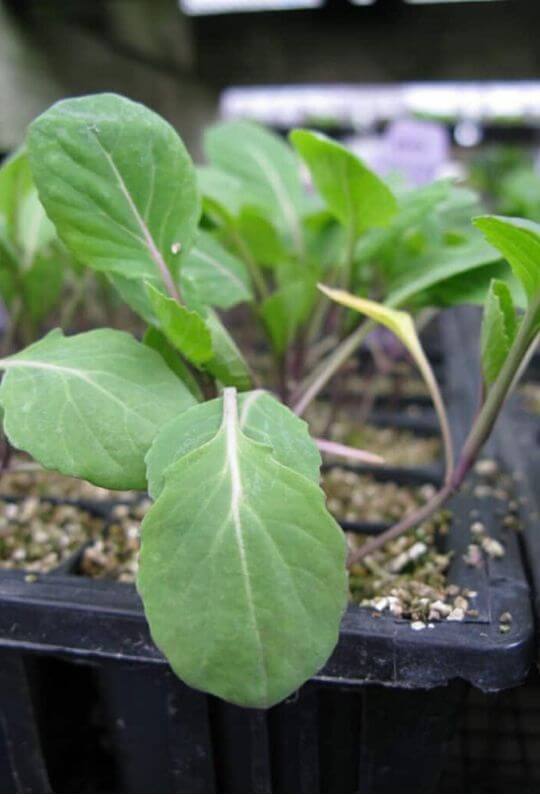
One thing that you should know is brussel sprouts are picky about their growing conditions. Remember that this is a cool-season crop, so it grows and matures better in cold temperatures.
You have to plant the seedlings at the same depth as in the container. So, take a look at how large the pot that you used to germinate and sprout the seeds and make the hole just as large.
Once in the hole, cover it back up with the soil, and water deeply to help establish the roots in the hole.
Caring For Brussel Sprouts In Pots
Once your plants are in their containers and growing, you have to know how to care for them properly. Here are the most crucial things that you need to know.
7: Watering Brussel Sprouts
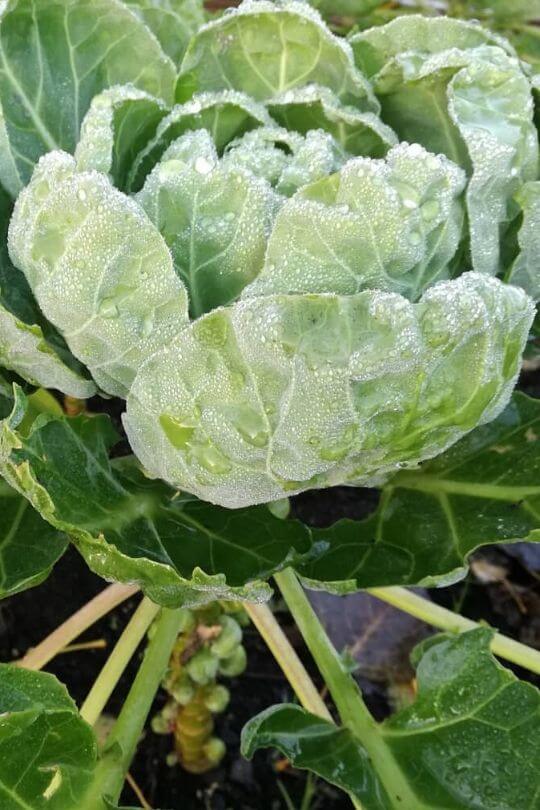
Growing any crop in a container can be a bit tricky because the soil dries out faster than it does in the ground.
You have to pay close attention and provide water regularly and as evenly as possible.
Be careful not to allow the soil to dry out in the sun, especially as the plant is maturing or during head formation. This will stunt growth and decrease sprout sizes.
At the same time, you don’t want to overwater. Overwatering kills crops just as quickly as underwatering.
To know if you need to water your plants, put your finger into the soil. If it’s dry two inches down into the soil, it’s time to water.
Water deeply, but be sure the pot has plenty of drainages. Standing water kills plants quickly.
8: Stake Your Plants
If you’ve ever seen a brussel sprout plant in person, you know that they’re a bit oddly shaped and proportioned.
Staking is an excellent idea because it helps prevent the plants from falling over. In containers, if the plants fall over, the chances are your entire pot tips over as well.
Before or after you plant your seedling, put a stake into the pot, and be prepared to use twine to keep the plant against the stake as it grows.
If you plant dwarf varieties, chances are you won’t need to do any type of staking. Those plants typically only reach heights of 24-28 inches, which is shorter than most tomato plants! If you decide not to grow the dwarf varieties, you may need to stake them.
9: Mulching Your Plant
You don’t HAVE to mulch your plants in containers unless you want to do so. Container gardening isn’t known for too many weeds.
The reason for mulching is that it helps to keep your soil cool and moist. We know that brussel sprouts prefer cool and moist soil, so it does help with growing a good harvest.
10: Fertilizing Brussel Sprouts
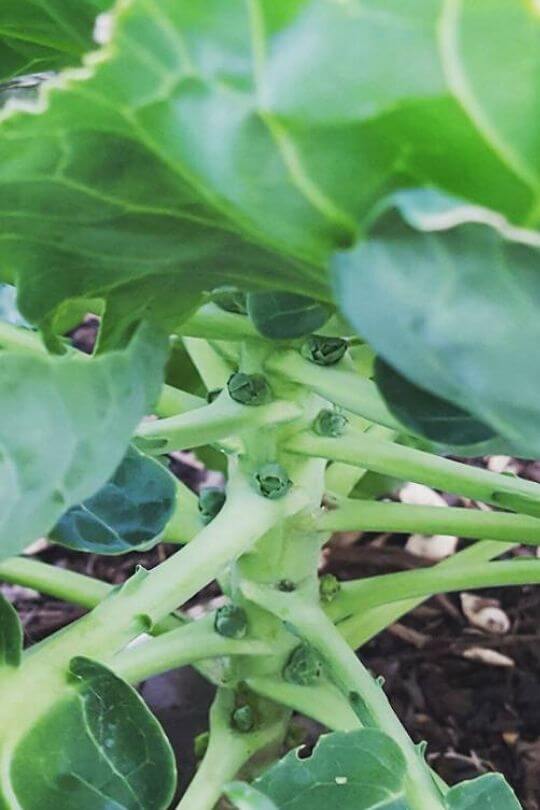
Brussel sprouts, like many of the brassica family members, are heavy feeders, so you need to add plenty of manure or compost to your plants along with fertilizer.
When you first plant into the containers, you should add either well-rotted manure or compost for the initial burst of nutrients needed to establish the plants and encourage fast growth.
Then, 3-4 weeks after planting, you can side-dress the plants with either compost or manure, or you can apply fertilizer.
The ideal fertilizers for brussel sprouts is a 10-10-10, 5-10-5, or 5-10-10 fertilizer. Always make sure that you follow the instructions for the fertilizer.
Another option is to use a liquid fertilizer designed for vegetable crops. You also can try compost tea every few weeks as an alternative to fertilizer.
11: Pruning Brussel Sprouts
Perhaps the most important thing that you need to do is prune your plants. You probably associate pruning with bushes, but you do need to prune some veggie plants as well.
Prune the lower leaves as you pick the matured sprouts from the bottom. As you remove the lower leaves, it encourages the plants to become taller and put more energy into developing new sprouts on the top of the plants.
12: Dealing With Pests And Diseases
Brussel sprouts are afflicted by the same pests that bother cabbage plants. Here are some that you might face.
The best way to combat diseases and pests is by keeping your plants healthy. Make sure they have enough water and air circulation between plants.
You can grow your plants under row covers to stop flying insects from laying larvae near the crops.
13: Harvesting Brussel Sprouts In Containers
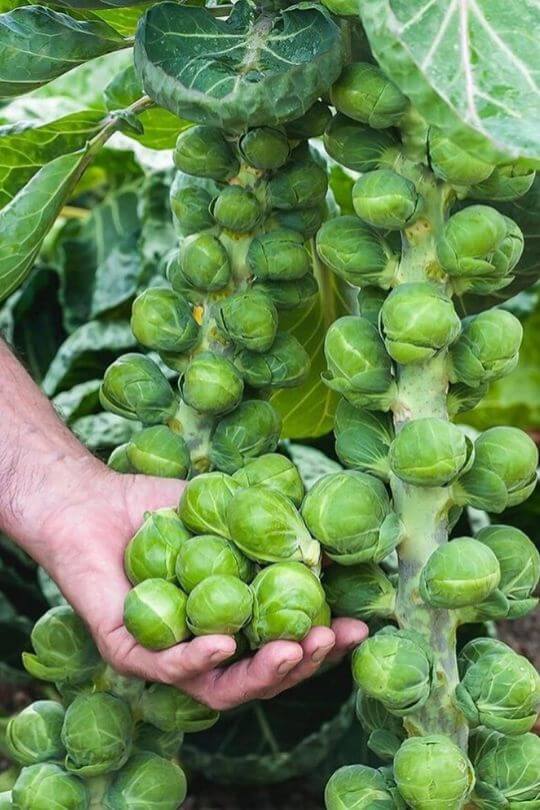
It typically takes three months after you plant your seedlings into the ground to reach a possible harvest.
You don’t harvest brussel sprouts all at one time. Instead, you collect from the bottom-up as they reach the size that you want.
Harvesting in this way helps to keep a steady supply of sprouts because it directs the plant’s energy upward into developing more sprouts.
A sprout that is ready to be harvested measures 1-2 inches in diameter. They feel firm with a consistent, dark green color.
Don’t yank the sprouts off of the plant. Instead, turn and twist the sprouts carefully, and they’ll pop right off of the plant.
Can I Grow Brussel Sprouts Inside?
You might wonder if you can grow brussel sprouts inside in a container without moving them outside.
It is possible to grow brussel sprouts indoors if you have a location that gets 6-8 hours of sunlight each day or if you have strong enough grow lights. However, chances are your harvest won’t be as large as it would be if you planted the veggie in a container outside.
The Best Varieties Of Brussel Sprouts For Container Gardening
When you’re growing brussel sprouts in pots, you want to pick dwarf or semi-dwarf varieties.
These don’t get as tall as some of the other types and are less likely to require any support systems to stop them from toppling your pot over.
1: Jade Cross
This is a hybrid that produces yields of flavorful sprouts. The plants tend to reach 24-28 inches tall.
They’re more compact than other varieties, so they’re less vulnerable to wind damage. This variety matures in 85 days, which is earlier than most.
2: Catskill
Here is a variety that produces large yields of extra-large sprouts, typically measuring two inches long.
This has a super-strong stalk, and the sprouts are ideal for freezing. The average maturity date is 90-100 days.
3: Long Island Improved
This is a semi-dwarf plant that grows with leaves closely spaced together. The sprouts grow on sport, self-supporting stems.
It was once a commercial variety, but now it’s beloved by home gardeners.
Final Thoughts
Now that you know growing brussel sprouts in containers is possible, are you ready to get started? Remember to water your plants often and avoid letting the soil get dry.
You do need to prune and fertilizer frequently for the best harvest possible.
Follow this guide, and you’ll have a fantastic harvest in your containers this year.

Written By
Amber Noyes
Amber Noyes was born and raised in a suburban California town, San Mateo. She holds a master’s degree in horticulture from the University of California as well as a BS in Biology from the University of San Francisco. With experience working on an organic farm, water conservation research, farmers’ markets, and plant nursery, she understands what makes plants thrive and how we can better understand the connection between microclimate and plant health. When she’s not on the land, Amber loves informing people of new ideas/things related to gardening, especially organic gardening, houseplants, and growing plants in a small space.

So I live in central Georgia. Zone 8. I am new to Brussels sprouts and think I started them too early. It’s April and my seedlings looks great. Should I attempt indoor container growing since we have such hot summers? Or should I discard and start more seeds later in the summer for fall harvest? Thanks so much!
Yes in warmer climates, fall planting is preferred. You should be able to direct seed in mid-summer for a late fall or early winter harvest.
And if you want to grow them in winter, you can Plant seeds in early April and transfer these outside in May or June.
Does broccoli have any yellow flowers growing on top?
The green ‘florets’ are the preform of the grownup plant, if you would not harvest it, but let it grow further, those florets would become real flowers, yellow flowers. So if you have broccoli florets in the kitchen that already turn a bit yellow it is a bit late harvested, but still eatable.
I have very large bag containers. (2 feet in diameter) For planting brussels sprouts could I fill the lower few inches with sand for drainage and the upper part with Miracle Grow moisture control potting soil to keep the soil moist. Also how far apart should the plants be planted.
Thanks so much for this article. It answered all my questions!